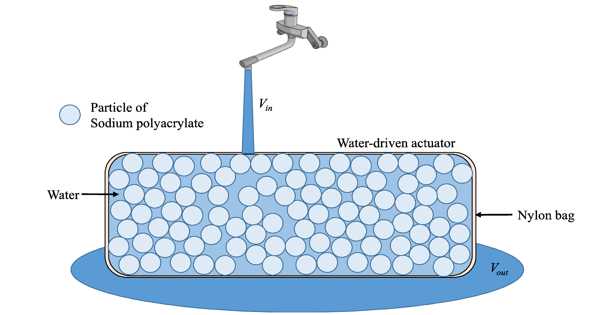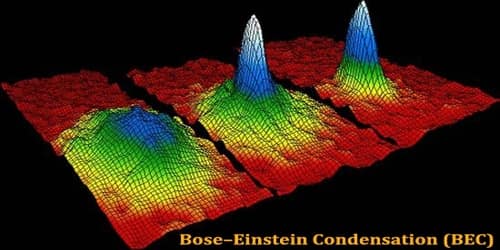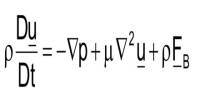Many important facets of society are anticipated to undergo radical transformation as a result of quantum technology. There are a lot more relevant quantum features and applications than what we now understand, according to researchers.
Researchers at Chalmers University of Technology in Sweden have created open-source, freely accessible software that will open the door for fresh insights and considerably speed up quantum research.
Quantum technology is anticipated to play a significant role in fields like energy, defense, communication, and health within the next several decades. The technology’s strength and promise are found in the peculiar and extremely unique characteristics of quantum particles.
The superconducting characteristics of quantum particles, which provide components perfect conductivity and distinctive magnetic properties, are of special interest to researchers in the subject. These now accepted superconducting characteristics have led the path for completely novel technologies employed in applications including magnetic resonance imaging devices, maglev trains, and quantum computer parts.
Before a quantum computer, for instance, can be expected to tackle practical computing issues, years of study and development must still be completed. The scientific community is persuaded that there are still a great number of groundbreaking discoveries in quantum technology left to be achieved.
Open-source code to explore new superconducting properties
All advances in quantum technology, from the invention of the transistor in 1947 through the laser in the 1960s to the quantum computers of today, are built upon fundamental studies in quantum materials.
However, the development and execution of experiments on quantum materials are frequently exceedingly resource-intensive, need extensive planning, and typically yield results that are challenging to interpret.
Extremely simplified models based on either the microscopic or macroscopic scale are often used at present. This means that they do not manage to identify all the important physics or that they cannot be used in practice. With this free software, we want to make it easier for others to accelerate and improve their quantum research without having to reinvent the wheel every time.
Professor Tomas Löfwander
But now, a group of Chalmers academics has created the open-source program SuperConga, which is free to use and created expressly to carry out sophisticated simulations and studies of quantum components.
The program operates at the mesoscopic level, which means that it can carry out simulations that are capable of “picking up” the strange properties of quantum particles, and also apply them in practice.
The open-source code, which is the first of its kind in the entire world, is anticipated to be able to investigate wholly novel superconducting properties and eventually pave the way for quantum computers that can use cutting-edge computing to address societal concerns in a variety of fields.
“We are specifically interested in unconventional superconductors, which are an enigma in terms of how they even work and what their properties are. We know that they have some desirable properties that allow quantum information to be protected from interference and fluctuations. Interference is what currently limits us from having a quantum computer that can be used in practice. And this is where basic research into quantum materials is crucial if we are to make any progress,” says Mikael Fogelström, Professor of Theoretical Physics at Chalmers.
As when its conventional siblings were first found in a lab more than a century ago, these new superconductors are still exceedingly mysterious substances.
It would take more than 40 years after that finding for academics to formulate a theoretical description of them. The Chalmers researchers are now hoping that their open-source code will help to uncover brand-new information and areas of application.
“We want to find out about all the other exciting properties of unconventional superconductors. Our software is powerful, educational and user-friendly, and we hope that it will help generate new understanding and suggest entirely new applications for these unexplored superconductors,” says Patric Holmvall, postdoctoral researcher in condensed matter physics at Uppsala University.
Desire to make life easier for quantum researchers and students
Tools that can investigate and make use of the amazing quantum qualities at the level of the smallest particles, as well as those that can be scaled up large enough to be employed in practice, are required to be able to explore revolutionary new discoveries.
Researchers need to work at mesoscopic scale. This is situated at the nexus between the microscopic scale, or the atomic level, where it is still possible to use the quantum properties of the particles, and the macroscopic scale, which measures regular objects in our world that, unlike quantum particles, are governed by classical physics.
Now that the software is capable of operating at this mesoscopic level, the Chalmers researchers intend to simplify the lives of academics and researchers who study quantum physics.
“Extremely simplified models based on either the microscopic or macroscopic scale are often used at present. This means that they do not manage to identify all the important physics or that they cannot be used in practice. With this free software, we want to make it easier for others to accelerate and improve their quantum research without having to reinvent the wheel every time,” says Tomas Löfwander, Professor of Applied Quantum Physics at Chalmers.
The article, “SuperConga: An open-source framework for mesoscopic superconductivity,” has been published in Applied Physics Reviews and was written by Patric Holmvall, the Department of Physics and Astronomy, Uppsala University, and Niclas Wall Wennerdal, Mikael Håkansson, Pascal Stadler, Oleksii Shevtsov, Tomas Löfwander and Mikael Fogelström, the Department of Microtechnology and Nanoscience at Chalmers University of Technology, Sweden.
More on the microscopic, mesoscopic and macroscopic scales
The mesoscopic regime is at the interface between the macroscopic and microscopic regimes. The macroscopic regime (usually millimeters and bigger) is dominated by classical physics, which can be used to describe commonplace items like footballs, animals, or even coffee makers. This is in contrast to the microscopic domain, where quantum physics rules and far smaller objects, like electrons, atoms, and other particles, can be detected.
On this minuscule size, one can investigate the peculiar characteristics of quantum particles, such as their ability to be completely conducting or to be in two places at once. Mesoscopic quantum components (typically micrometers down to nanometers) are so small that the strange properties of quantum particles can be accessed and used, but also large enough that they can be applied in practice.
Both microscopic and more macroscopic simulations have open-source software already. The first free program in the world that can simulate superconductors at the mesoscopic level is called SuperConga.
















